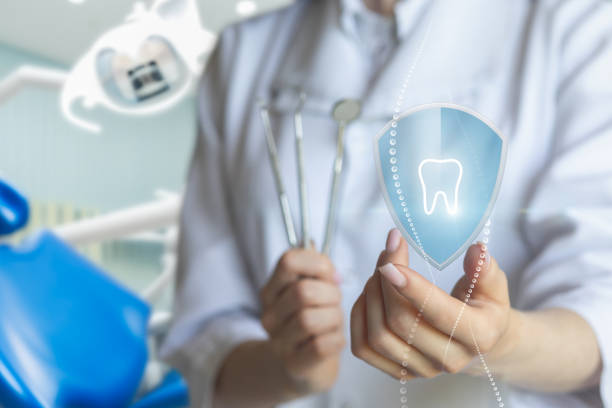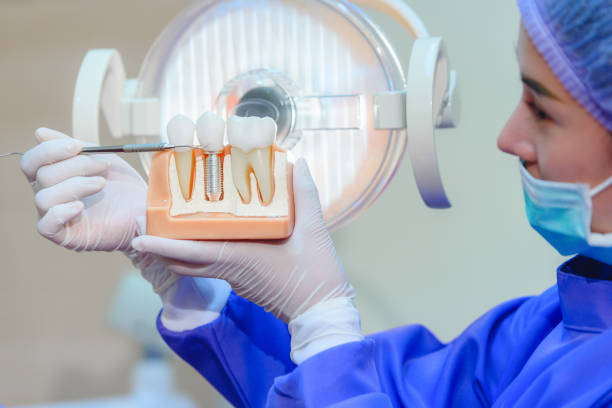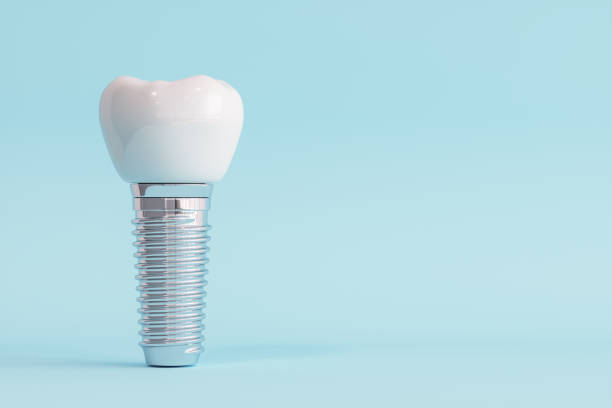By Dr. Jaime R. Estrella, DDS – TruSmile Dental Implant Center
As dental implants become more popular, so do the misconceptions surrounding them. At TruSmile Dental Implant Center, we often meet patients who are unsure about implants due to outdated information or internet myths.
Let’s clear the air by debunking some of the most common myths and giving you the facts you need to make an informed decision about your oral health.
Myth 1: “Dental Implants Are Painful”
Truth: Thanks to modern techniques, implant surgery is relatively painless. The procedure is usually performed under local anesthesia or sedation, and most patients report minimal discomfort—similar to having a tooth pulled. Post-operative soreness is typically manageable with over-the-counter medication.
A study published in the Journal of Oral Implantology found that most patients described their implant experience as less painful than expected [1].
Myth 2: “Dental Implants Are Only for the Elderly”
Truth: While older adults frequently get implants, they are not the only candidates. In fact, implants are suitable for any adult with fully developed jawbones and good oral health. Whether you’r’ 30 or 70, dental implants can be a permanent solution for missing teeth [2].
Myth 3: “Dental Implants Don’t Last Long”
Truth: When properly cared for, dental implants can last 25 years or more—often a lifetime. Studies show long-term success rates of 90–95% at 10 years and beyond [3]. They are one of the most durable and cost-effective long-term tooth replacement solutions available.
Myth 4: “They Look Fake”
Truth: Modern dental implants are custom-designed to match the color, shape, and size of your natural teeth. At TruSmile, we work closely with top dental labs to ensure your restoration blends seamlessly with your smile.
In many cases, even dentists have trouble distinguishing between a natural tooth and a well-crafted implant [4].
Myth 5: “Dental Implants Are Too Expensive”
Truth: While the upfront cost of dental implants may be higher than bridges or dentures, they’re often more cost-effective in the long run. Dentures require replacement, relining, and adhesives—costs that add up over time. Implants, on the other hand, offer a permanent solution with less maintenance.
Additionally, many dental offices (including TruSmile) offer financing options to help make implants more affordable.
Myth 6: “Implants Aren’t Safe”
Truth: Dental implants are one of the safest procedures in modern dentistry. With decades of clinical research, they have an excellent safety profile when placed by trained professionals [5].
At TruSmile, we use digital imaging, computer-guided surgery, and evidence-based protocols to ensure the highest standard of care and reduce risks.
Myth 7: “Smoking or Health Conditions Disqualify Me”
Truth: While smoking, diabetes, or bone loss can increase the risk of complications, they don’t automatically disqualify you. We assess every patient on a case-by-case basis. In many instances, pre-treatment like bone grafting or smoking cessation support can help make implants viable [6].
Final Thoughts
Dental implants are a transformative, long-term solution to missing teeth—but misinformation can keep people from benefiting from them. If you’r’ considering implants, don’t’let myths hold you back. At TruSmile Dental Implant Center, we’re here to provide honest answers and expert care.
Ready to learn more? Schedule your consultation and let’s separate fact from fiction—together.
References:
- Pommer, B., Zechner, W., Watzek, G., & Tepper, G. (2011). Progress and trends in patient satisfaction with dental implants: A systematic review. Journal of Oral Implantology, 37(3), 345–356.
- Branemark, P.-I. (1983). Osseointegration and its experimental background. The Journal of Prosthetic Dentistry, 50(3), 399–410.
- Buser, D., et al. (2012). 10-year survival and success rates of 511 titanium implants with a sandblasted and acid-etched surface. Clinical Oral Implants Research, 23(1), 8–16.
- Jung, R. E., et al. (2008). A systematic review of the accuracy of conventional and digital methods for the identification of dental implants. Clinical Oral Implants Research, 19(8), 800–808.
- Chrcanovic, B. R., Albrektsson, T., & Wennerberg, A. (2015). Dental implants in patients with systemic diseases: A systematic review. International Journal of Oral & Maxillofacial Surgery, 43(5), 558–568.
- Moy, P. K., Medina, D., Shetty, V., & Aghaloo, T. L. (2005). Dental implant failure rates and associated risk factors. The International Journal of Oral & Maxillofacial Implants, 20(4), 569–577.



